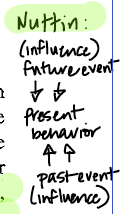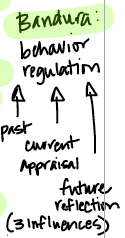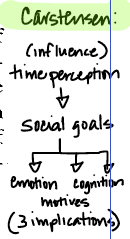for - paper - title - Memory, Sleep, Dreams, and Consciousness: A Perspective Based on the Memory Theory of Consciousness - author - Andrew E. Budson, Ken A Paller - adjacency - memories - sleep - dreams - Memory Theory of Consciousness - MToC
summary - The authors present a theory of dreaming and sleep that I resonate with, that sleep is a time in which the brain performs unconscious processing of memories, consolidating them by taking advantage of consciousnesss down time to perform massive parallel processing to connect memories together. - dreams are seen as a small conscious byproduct of the massive parallel processing task, and their meaning may have value depending on how we interpret them.
- Oct 2025
-
www.dovepress.com www.dovepress.com
Tags
- adjacency - memories - sleep - dreams
- author - Andrew E. Budson, Ken A Paller
- MToC
- Memory Theory of Consciousness
- summary - paper about sleep as time for unconscious memory consolidation
- paper - title - Memory, Sleep, Dreams, and Consciousness: A Perspective Based on the Memory Theory of Consciousness
Annotators
URL
-
- Jan 2024
-
docdrop.org docdrop.org
-
for - talk - David Ray Griffin - time, consciousness and freedom from Whitehead process perspective
-
- Aug 2018
-
wendynorris.com wendynorris.com
-
Second, howtime is variously used in past constructions that givesense to what has occurred, in for example, nostal-gic tales that seek to sustain identity-relevant valuesand beliefs, or using time to leverage reformulationsin repositioning these tales, for example, with theaim of undermining nostalgia as a platform for resis-tance (see Brown and Humphreys 2002; Strangleman1999).
Future research direction: Importance of reflexivity // Effects of Time Perspectives on sensemaking
See: Zimbardo & Boyd's Time Perspectives
-
-
wendynorris.com wendynorris.com
-
Temporal focus is the degree of emphasis on the past, present, and future (Bluedorn 2000e, p. 124).
Temporal focus definition. Like temporal depth, both are socially constructed.
Cites Lewin (time perspective) and Zimbardo & Boyd.
-
However, Boyd and Zimbardo’s interest was not in comparing short-, mid-, and long-term temporal depths; rather, it was in examining the degree to which people were oriented to a transcendental future, and in examining the extent to which this variation covaried with other factors such as age, gender, and ethnicity. This is a natural extension of the questions involved in research on general past, present, and future temporal orientations (e.g., Kluck- hohn and Strodtbeck 1961, pp. 13-15), orientations that at first glance appear similar to issues of temporal depth. However, as I have argued elsewhere in opposing the use of the temporal orientation label, these general orientations are more an issue of the general temporal direction or domain that an individual or group may emphasize (Bluedorn 2000e) than the distance into each that the individual or group typically uses. The latter is the issue of temporal depth; the former, what I have called temporal focus (Bluedorn 2000e)
Comparison of Bluedorn's thinking about temporal depth vs temporal focus instead of framing it as a temporal orientation (the direction/domain that an individual or group emphasizes in sensemaking).
ZImbardo and Boyd use the phrase "time perspective" rather than temporal orientation
-
- Jul 2018
-
wendynorris.com wendynorris.com
-
Drawing on the theory of distributed cognition [5], we utilizerepresentational physical artifacts to provide a tangible interface for task planning, aural cues for time passage, and an ambient, glanceable display to convey status
Is there a way to integrate dCog and a more sociotemporal theory, like Zimbardo & Boyd's Time Perspective Theory or some of Adam's work on timescapes?
-
-
wendynorris.com wendynorris.com
-
This conjecture leads us to promote the ideal of a “balanced TP” as most psycho-logically and physically healthy for individuals and optimal for societal functioning. Balance is defi ned as the mental ability to switch fl exibly among TPs depending on task features, situational considerations, and personal resources rather than be biased toward a specifi c TP that is not adaptive across situations. The future focus gives people wings to soar to new heights of achievement, the past (positive) focus establishes their roots with tradition and grounds their sense of personal identity, and the present (hedonistic) focus nourishes their daily lives with the playfulness of youth and the joys of sensuality. People need all of them harmoniously operating to realize fully their human potential.
Balanced time perspective definition. Later called optimal time shifting in the Time Paradox book.
What are the heuristics and/or design implications for evoking more ideal time shifting behaviors and outcomes?
-
A further limitation of the generalizability of our scale may lie in its cultural relevance to individualist societies and their ambitions, tasks, and demands rather than to more collectivist, interdependent societies in which time is differently val-ued and conceptualized (Levine 1997 ). Obvious cross-cultural adaptations of the ZTPI are called for.
Acknowledged limitations in the original paper note that students may be more future oriented and the scale was predominantly tested on Western individualist cultures.
Later work has demonstrated that these concerns are not born out.
-
Our scale also has dem-onstrated predictive utility in experimental, correlational, and case study research.
The ZPTI is predictive of other psychological concepts -- emotional, behavioral, and cognitive -- that have temporal relationships.
Temporality is a rare psychological variable that can influence "powerful and pervasive impact" on individual behavior and societal activities.
-
The scale is based on theoretical reflection and analyses, interviews, focus groups, repeated factor analyses, feedback from experiment participants, discriminant validity analyses, and specifi c attempts to increase factor loadings and internal consistencies by item analyses and revisions.
Claims the ZPTI is both valid and reliable due to mixed-method empirical study and factor analysis to establish measurable constructs and consistency of findings.
-
State of Research on TP
Critique of previous research as overly simplified, one-dimensional (focused on future or present states, ignored past) and lack of reliable and valid measures for assessing time perspectives.
-
Thus, we conceive of TP as situationally determined and as a relatively stable individual-differences process.
Identifies time perspective as both a state and a trait. This fits with the idea that time perspective shifting is possible and preferred. The argument also supports the later empirical work that people are unaware of their time perspective and how it influences/biases their thinking and behavior (both positive as in goal setting, achievement, etc., and negative as in addiction, guilt, etc.)

-
Such limiting biases contrast with a “balanced time orientation,” an ideal-ized mental framework that allows individuals to fl exibly switch temporal frames among past, future, and present depending on situational demands, resource assess-ments, or personal and social appraisals. The behavior of those with such a time orientation would, on average, be determined by a compromise, or balancing, among the contents of meta-schematic representations of past experiences, present desires, and future consequences.
A temporal bias results from habitual overuse/underuse of past, present or future temporal frames.
Introduces the idea of optimal time shifting to incorporate various environmental forces.
-
In both cases, the abstract cognitive processes of reconstructing the past and constructing the future function to infl uence current decision making, enabling the person to transcend compelling stimulus forces in the immediate life space and to delay apparent sources of gratifi cation that might lead to undesirable con-sequences.
Core premise of Zimbardo and Boyd's time perspective theory diverges from Nuttin, Bandura and Carstensen's work.
Time Perspective Theory posits that dynamic influences on present behavior and cognition comes from top-down abstract (past/future) ideas and bottom-up environmental forces (social, biological, sensory).

-
More recently, Joseph Nuttin ( 1964 , 1985 ) supported the Lewinian time-fi lled life space, where “future and past events have an impact on present behavior to the extent that they are actually present on the cognitive level of behavioral functioning” ( 1985 , p. 54). Contemporary social–cognitive thinking, as represented in Albert Bandura’s ( 1997 ) self-effi cacy theory, advances a tripartite temporal infl uence on behavioral self-regulation as generated by effi cacy beliefs grounded in past experiences, current appraisals, and refl ections on future options. Behavioral gerontologist Laura Carstensen and her colleagues (Carstensen et al. 1999 ) have proposed that the perception of time plays a funda-mental role in the selection and pursuit of social goals, with important implications for emotion, cognition, and motivation.
Related work that builds on Lewin's premise:
Nuttin theorizes about the influence of past and future events on present behavior

Bandura's position supports his self-efficacy theory that temporal influences affect a person's innate ability to exert control over one's behavior in order to achieve goals.

Carstensen proposes that time perception influences choices, motives, and emotions about social goals.

-
TP is the often nonconscious process whereby the continual fl ows of personal and social experiences are assigned to tem-poral categories, or time frames, that help to give order, coherence, and meaning to those events.
Time perspective is an intuitive, unconscious process that people use for sensemaking in the present, recall of the past and to predict the future.
In this view, the present is concrete where past and future are abstract.
-
Lewin ( 1951 ) defi ned time perspective (TP) as “the totality of the individual’s views of his psychological future and psychological past existing at a given time” (p. 75).
Lewin defined time perspective.
Per Zimbardo/Boyd, Lewin's view incorporates a Zen-like present orientation that evokes a circular motion of time over the Western-centric linear/directional motion.
-
-
wendynorris.com wendynorris.com
-
And although an infinite number of patterns are possible, all strategies for engaging life’s activities fall along a continuum known as polychronicity, a continuum describing the extent to which people engage themselves in two or more activities simultaneously. That this choice is fundamental is revealed by the fact that most people most of the time are unaware that they are even making it. This is because the choice of strategy results from a combination of culture and personality, both of which store these choices and preferences at deep levels, very deep levels. Nevertheless, a choice or a decision made unconsciously is still a choice or a decision
Decision strategies, like polychronicity, are often intuitive and unconscious.
Bluedorn mentions how culture and personality play a critical role in decision strategies. Potential intersection with Zimbardo's time perspective theory.
-
-
wendynorris.com wendynorris.com
-
appointment. Time chunksopen up the possibility for future-oriented temporal manipulation and valuation; they assumethat we are able to know, in advance, the duration of tasks and experiences.
How does the idea of time chunks and future-orientation fit with:
Reddy's temporal horizon concept? Zimbardo's future time perspective?
-